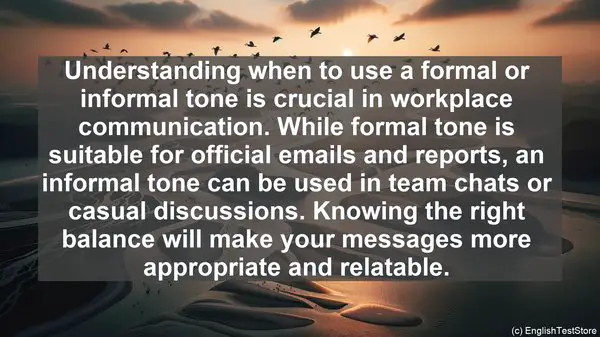1. Mastering Formal and Informal Tone
Understanding when to use a formal or informal tone is crucial in workplace communication. While formal tone is suitable for official emails and reports, an informal tone can be used in team chats or casual discussions. Knowing the right balance will make your messages more appropriate and relatable.
2. Active Listening for Effective Responses
Active listening involves not just hearing, but also understanding and responding appropriately. It shows your engagement and helps in building rapport. Techniques like paraphrasing or asking clarifying questions demonstrate your attentiveness and ensure clear communication.
3. Constructing Clear and Concise Emails
In the fast-paced work environment, concise emails are preferred. Start with a clear subject line, use short paragraphs, and bullet points for easy readability. Proofread for grammar and spelling errors before hitting send to maintain a professional image.
4. Polishing Presentation Skills
Presentations are a common part of business settings. To deliver an impactful presentation, focus on structuring your content, using visual aids effectively, and practicing your delivery. Engage the audience through questions or interactive elements for a dynamic session.
5. Navigating Difficult Conversations with Diplomacy
Workplace can sometimes involve challenging discussions. Diplomacy is key in such situations. Start with acknowledging the other person’s perspective, use neutral language, and propose solutions rather than dwelling on the problem. This approach fosters collaboration and maintains relationships.
6. Mastering the Art of Small Talk
Small talk is not just about casual conversation; it’s a way to build connections. Be prepared with open-ended questions, show genuine interest, and actively listen. Finding common ground or shared experiences can help in establishing rapport with colleagues or clients.

7. Using Appropriate Body Language
Non-verbal cues play a significant role in communication. Maintain eye contact, use gestures to emphasize points, and have an open posture to appear approachable. Being aware of your body language and adapting it to the situation can enhance your message’s impact.
8. Cultivating Cross-Cultural Sensitivity
In diverse workplaces, understanding and respecting different cultures is essential. Be aware of cultural norms, avoid assumptions, and be open to learning. This inclusive approach fosters a harmonious work environment and prevents misunderstandings.
9. Effective Time Management
Time is a valuable resource in business. Prioritize tasks, set realistic deadlines, and avoid multitasking, which can lead to errors. Communicate proactively if deadlines need adjustment. Being organized and respecting others’ time demonstrates professionalism.

